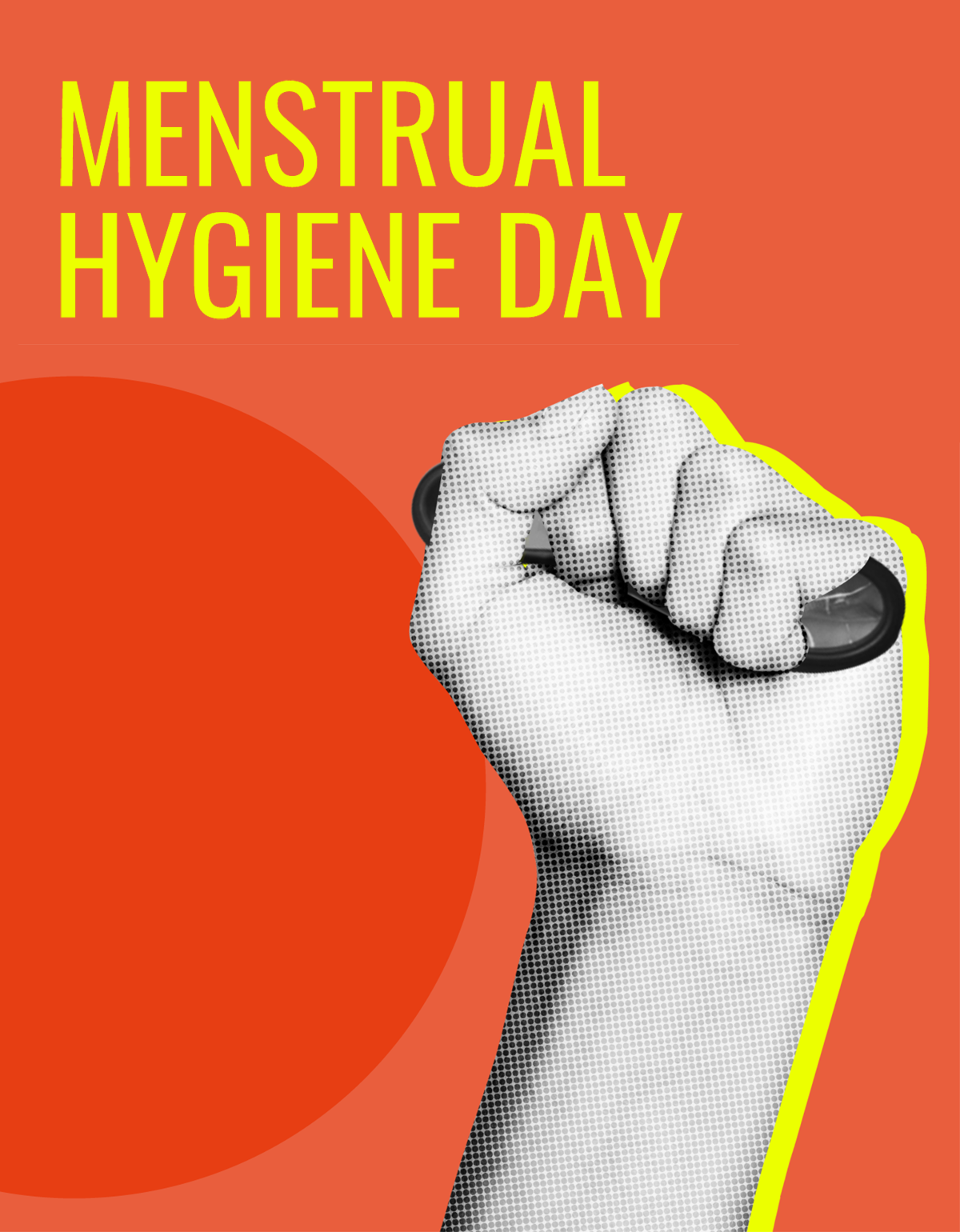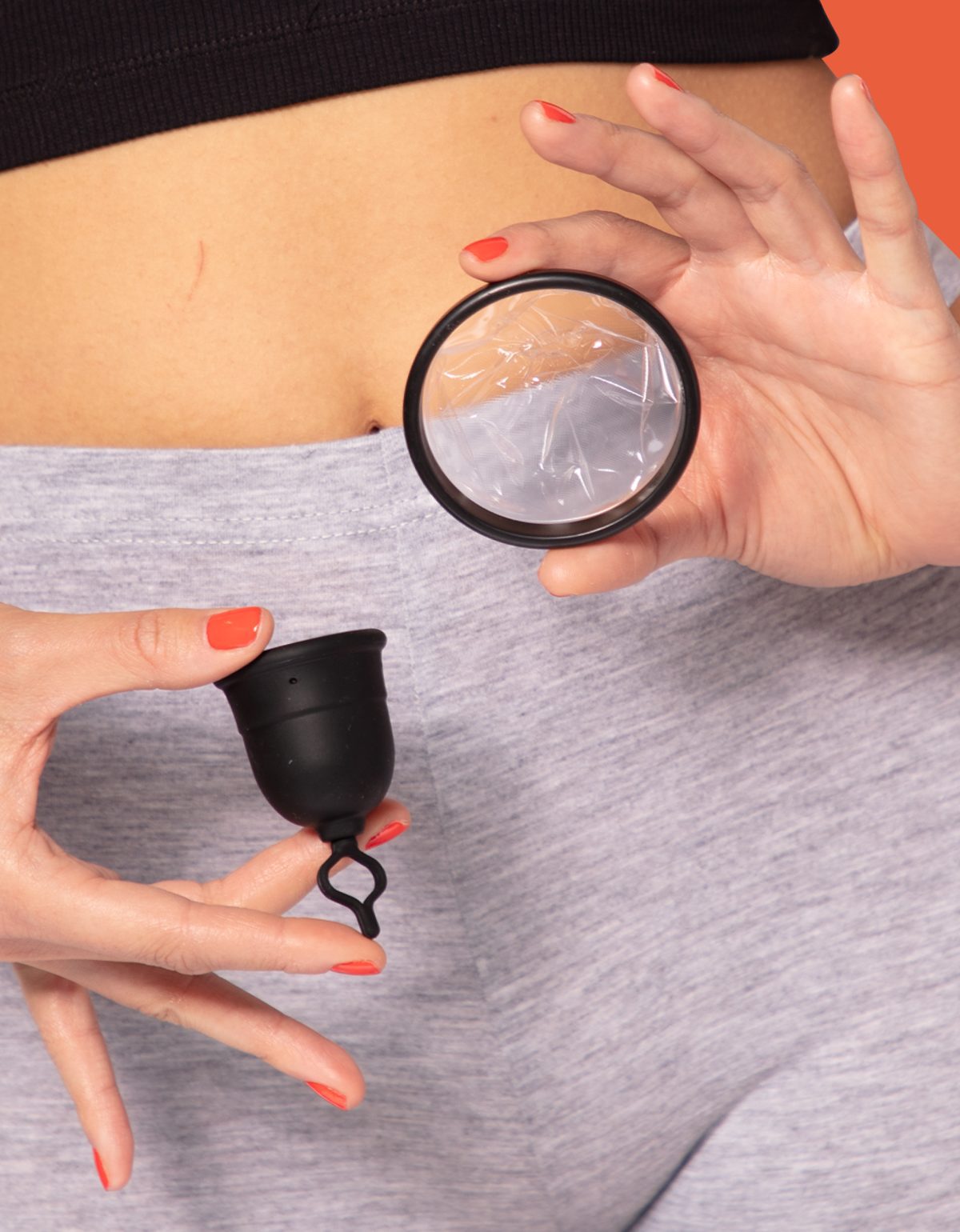TikTok roundup: Non-menstruators react to period products
What TikTok can teach us about period stigma
Non-bleeders know very little about periods. Schools usually teach menstrual education as part of their sex-ed curriculum, in classrooms segregated by gender. That’s a problem. Today, we’re chatting with you about why non-bleeders need to be part of the period conversation. We’re looking at TikTok as a cultural lens to show us just how much non-menstruators understand about menstruation—and why this needs to change!
Lack of adequate information breeds misinformation, and misinformation contributes to stigma. To show just how paltry menstrual education is for non-bleeders and people AMABAMAB stands for “assigned male at birth.”, we look to pop culture—in this case, TikTok. The results, as evidenced in the following clips, are…a bit worrisome? If you’re able to catch a laugh before the horror sinks in, they’re also hilarious.
Watch the Toks: Period pranks & tampon mishaps
Take a look at some of our favorite reactions and pranks from across #PeriodTikTok. Afterward, we’ll unpack why non-bleeders need to be part of the conversation around periods.
Technical note: If you aren’t able to press “play” on the TikToks and you’re reading this from a mobile device, try rotating your phone 90 degrees (holding it in “landscape” instead of how you normally hold it).
1. How do you pee with a pad on?
This person’s boyfriend has no idea how pads work but figures it out with some help.
@ariannaromanoo please listen😂😂😭😭 my boyfriend didn’t know 🥺🥺 #fyp ♬ original sound – lil ari
2. This is how tampons work
A menstruator explains how tampons work to their spouse with a TikTok experiment where you pop open a tampon into a glass of water and show the tampon expanding. Side note: The parachute-like expansion of a tampon submerged in a glass of water is a fun visualization, but it’s not an accurate representation of what actually happens during a period. Your uterus releases a gradual trickle of fluid—so a tampon expands slowly over the course of many minutes or hours (depending on your flow).
3. A vagina parachute
This husband doesn’t even want to touch a tampon straight from its unused package but witnesses the same experiment (tampon in a cup of water) as the prior TikTok. As the tampon expands, he exclaims, “Is that what it does inside of you!?”
4. What does the “R” stand for?
A non-menstruator guesses what the letters on tampons mean and thinks R is for “rip,” S is for “sport,” and L is for “large.”
5. Applicator confusion
This sibling takes a guess at how tampons work. His theory on the “plastic thing” is surprisingly logical (but 100% incorrect). He does this all while eating what looks like a slice of apple pie and is totally unfazed by the tampon itself. Progress!
6. Do they say the flavor on the label?
A menstruator pranks her boyfriend by telling him she doesn’t like the flavor tampon he’s brought. She asks him to find ‘blue raspberry flavor’ instead. He dutifully sets off to look for it, no questions asked.
P.S. We’re pretty sure that flavored tampons don’t exist, but in case someone ever tries to make this a thing—please remember that vaginas don’t need to smell or taste like anything other than exactly what they are! Your pH will thank you.
7. I asked the manager!
This menstruator sends her husband into a drugstore to find a period product that doesn’t exist. He recounts his experience asking store employees where he could find The Rejuvacooch 3000.
8. Plug me in, coach
This boyfriend comes out of the store disgruntled after being unable to locate a “rechargeable tampon” as requested by his menstruating partner.
9. It’s like a mini toy plunger
This husband does a surprisingly great job deciphering the logistics of a menstrual cup after a few wild card guesses (cooking utensil, perhaps?). He even masters one of the folding techniques #hotdogstyle.
The menstrual education gap & what it means
Hopefully, you’ve had a few laughs, and now we can get to talking about why education around menstruation matters.
In Palgrave Handbook of Menstruation Studies, author Mindy J. Erchull notes that “gender-segregated health and sexual education curricula rarely include menstruation in the content covered with boys.” 1
While seemingly harmless, the impact of this exclusion has colossal effects. Most overtly, non-bleeders simply don’t know what happens, as evidenced by our TikTok round-up. Where does a period come from? How long do they last? A menstrual cup goes where? Are cramps really that bad?
Erchull highlights some of the misconceptions that research has found to be held by those who do not have a period: “They often did not hold an accurate understanding of what menstruation was and how it worked. For example, they might understand that it involves blood coming out of the vagina, but they might attribute to something other than the shedding of the uterine lining, such as ‘the breaking of the ovaries’ or to expel a harmful microbe.” 1
Lack of knowledge around menstruation explains non-menstruators’ surprised reactions to tampons expanding or why they fall for made-up period products in the first place.
Secondly, exclusion in menstrual education creates more stigma and says that menstruation should be kept private for the person experiencing it. This secrecy breeds shame for bleeders and embarrassment for non-bleeders who may have questions.
Without knowing basic facts about the menstrual process, non-bleeders may look to other sources like their friends to get information. As you can guess, this breeds misinformation, and misinformation perpetuates further stigma.
The consequences of period stigma are especially severe in developing countries and in underserved communities. Lack of access to period products is one of the most critical problems faced around the globe. However, there are other consequences that affect even the wealthiest and most developed nations: The persistent tampon tax in the United States, for example, or the lack of funding for menstrual research, or the delays or misdiagnosis of conditions like endometriosis or PCOS that affect people AFABAFAB stands for “assigned female at birth.”.
Erchull notes a study in Taiwan and says, “despite most of the male participants being familiar with menstruation, they had less accurate knowledge of menstruation than did their female peers, and they were more likely to endorse cultural myths about menstruation and restrictions on menstruating girls and women.” 2
It’s no surprise negative attitudes toward menstruation were commonly found in participants who received little education about it. Erchull goes on to mention that disgust is a common reaction when non-menstruators don’t feel comfortable talking about periods. How do we change this? It starts with awareness of the problem and willingness to change.
What happens when non-menstruators learn about periods
It’s funny that menstruators in TikToks can come up with ridiculous menstrual products that don’t exist, and non-menstruators go looking for them and even get store employees involved. But it’s also disheartening to think about how little non-menstruators know about periods, reproductive health, and sexual wellness.
Talking about periods can help shift the pervasive societal taboos we’ve practiced for centuries. It’s the first step towards normalizing the experience. And it goes even beyond periods: Actively learning about experiences or processes that may not apply to you creates more empathy for those around you, whether it’s a parent, friend, sibling, or partner.
Whether or not you yourself get a period each month, you more than likely interact regularly with someone who does. When non-bleeders educate themselves on the process and their attitudes shift, this sets the stage for widespread societal change—change that, as we’ve seen many times, is greatly needed.
This article is informational only and is not offered as medical advice, nor does it substitute for a consultation with your physician. If you have any gynecological/medical concerns or conditions, please consult your physician.
© 2021 The Flex Company. All Rights Reserved.
- Erchull, M. J. (2020, July 25). “You Will Find Out When the Time Is Right”: Boys, Men, and Menstruation. Springer. https://link.springer.com/chapter/10.1007/978-981-15-0614-7_31[↩][↩]
- Cheng, C. Y., Yang, K., & Liou, S. R. (2007). Taiwanese adolescents’ gender differences in knowledge and attitudes towards menstruation. Nursing & health sciences, 9(2), 127–134. https://doi.org/10.1111/j.1442-2018.2007.00312.x[↩]








